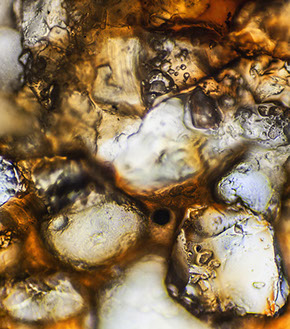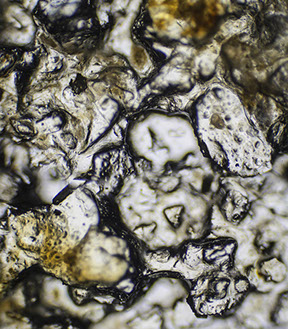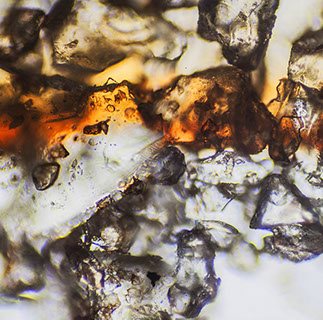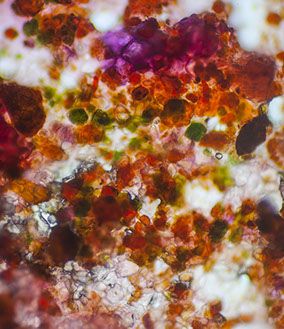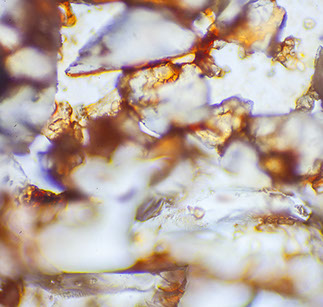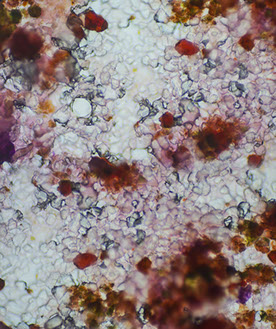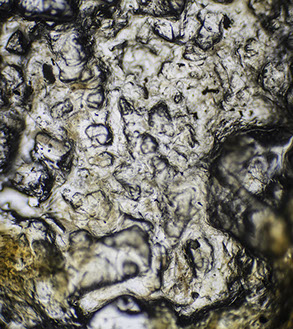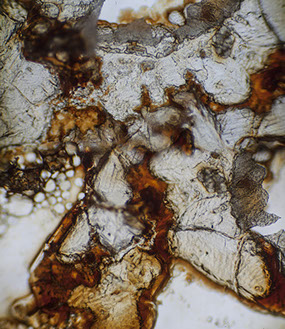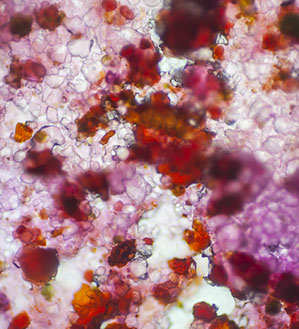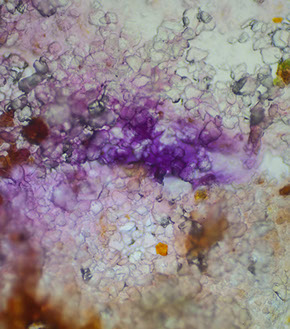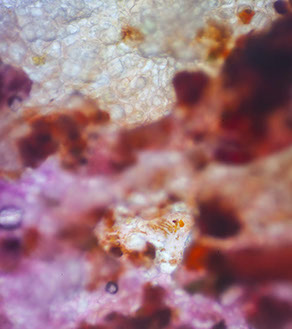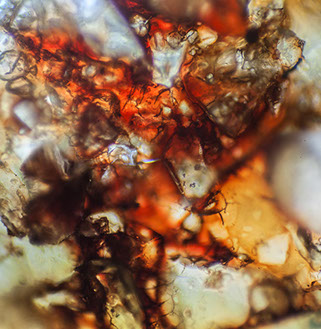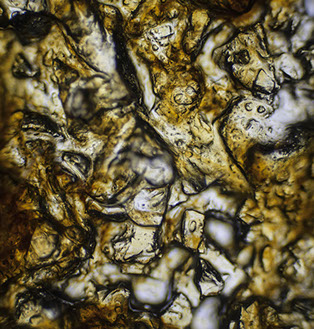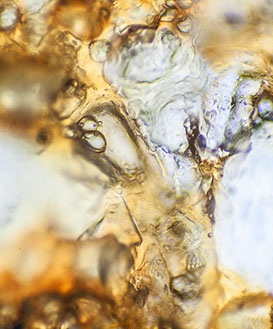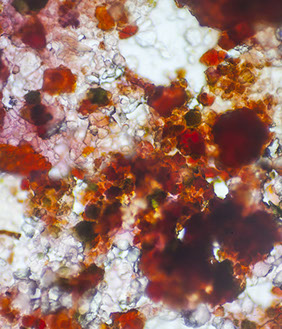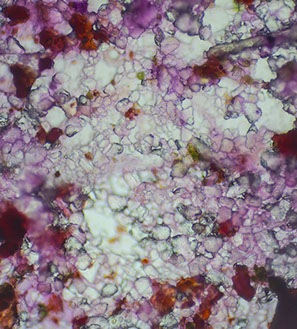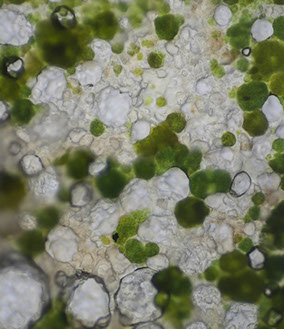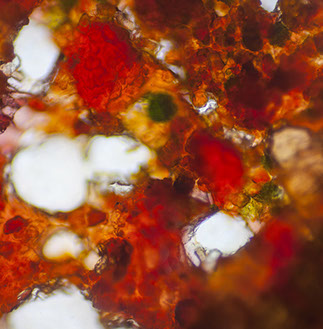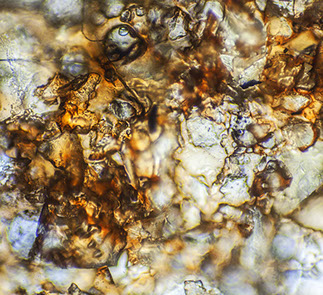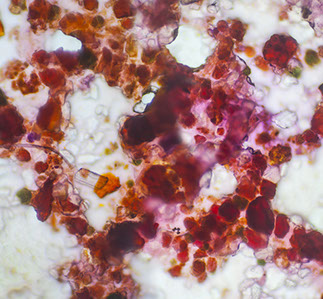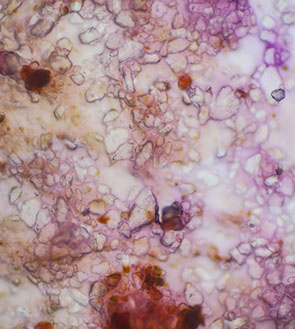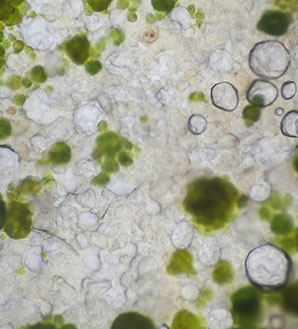PROJECTS
ART
ARCH
MATTER
SOUND
BOOKS
BIO
FEET

ARTWORKS = ARCHITECT AS SHAMAN MICRO COLLECTION = Human experience in relation to the perceptual cognition of materials through design research on all scales of an organisms life is the conceptual frame- work of this research experiment. Micro-organisms, and molecular matter all have different surface textures that can inspire architectural, and sculptural objects. When we use haptic ways of perceiving these textures we can create experiences that can affect human perceptions in relation to empathy, beauty, and scale. This can be referred to as a component based philosophy of molecular emptiness within architectural design research, and art creation. There is also a natural transformation in plant anatomy that is based on the amount of light levels in its environment, photomorphogenesis, which is the study of the internal morphological structure of plants, at the microscopic level. While taking this into account this experimental photographic essay aims to exhibit this phenomena by which the change relating to the form, or structure of organic, and inorganic matter vibrates. It highlights the hidden tensions and therapeutic medicinal elegance found on a molecular scale of environ- mental observation. This was achieved by photographing the relationship of blood, silica, mucus, acid, and H20 under the microscope magnified between 9,000[x] and 36,000[x] times what the eye can see, in areas where dead micro- organisms had been mixed with plasma. Blood plays a vital role in sustaining life within biological systems as well as sustaining deep rooted belief systems on an anthropological scale. Biologically it has a dualistic function which allows it to embody the responsibilities of giving, and taking away through the act of mediated motion or swimming in, around, and between the internal circle. The giving of oxygen to internal tissues. The giving of vitamins to internal tissues and cells. The taking away of waste. The taking away of infection. The mediation of temperature in internal organs. The mediation of pH levels. On one level blood is the giver of life by providing the internal organs with the energy, and components in which facilitate life. The act of creating. On another level blood destroys the unneeded, unwanted, and useless through the protection element embedded in her chemistry which is the function of white blood cells. This realization of the gift within the balancing performance of blood can be found cross-culturally through colour symbolism, rituals, architecture interiors, religious perspectives, and medicinal anthropological belief systems. To combine iron and oxygen equates a sensation of red. The colour semiotics of the sensation of red connects to a vast amount of different cultural associations, but the binding element or symbolic meaning that connects them all is a relation to the fragility of life. Either in the taking away of life through the lost of blood or the beginning of it through birth. This essential quality of visual expression, and its universal presence in our psyche is what makes up the aesthetic colour palate of this experimental bio-architectural photographic research. What happens when blood, fermented with molecular architectural textures grace the imagination of the mental ecology? Can anthropological colour semiotics or the cyclical entropic qualities in the oxidation of iron in blood produce sensations of beauty, contemplation, or provocations cross culturally, that act as a catalyst to induce a highly acute environmental value system? To begin to see.
Design Components = Hitachi Electron Microscope SU7000 + Microbial Blood Stain + Silica Ash + H2O
Artefact Collection = Palm Acid Archival Crystal Print
